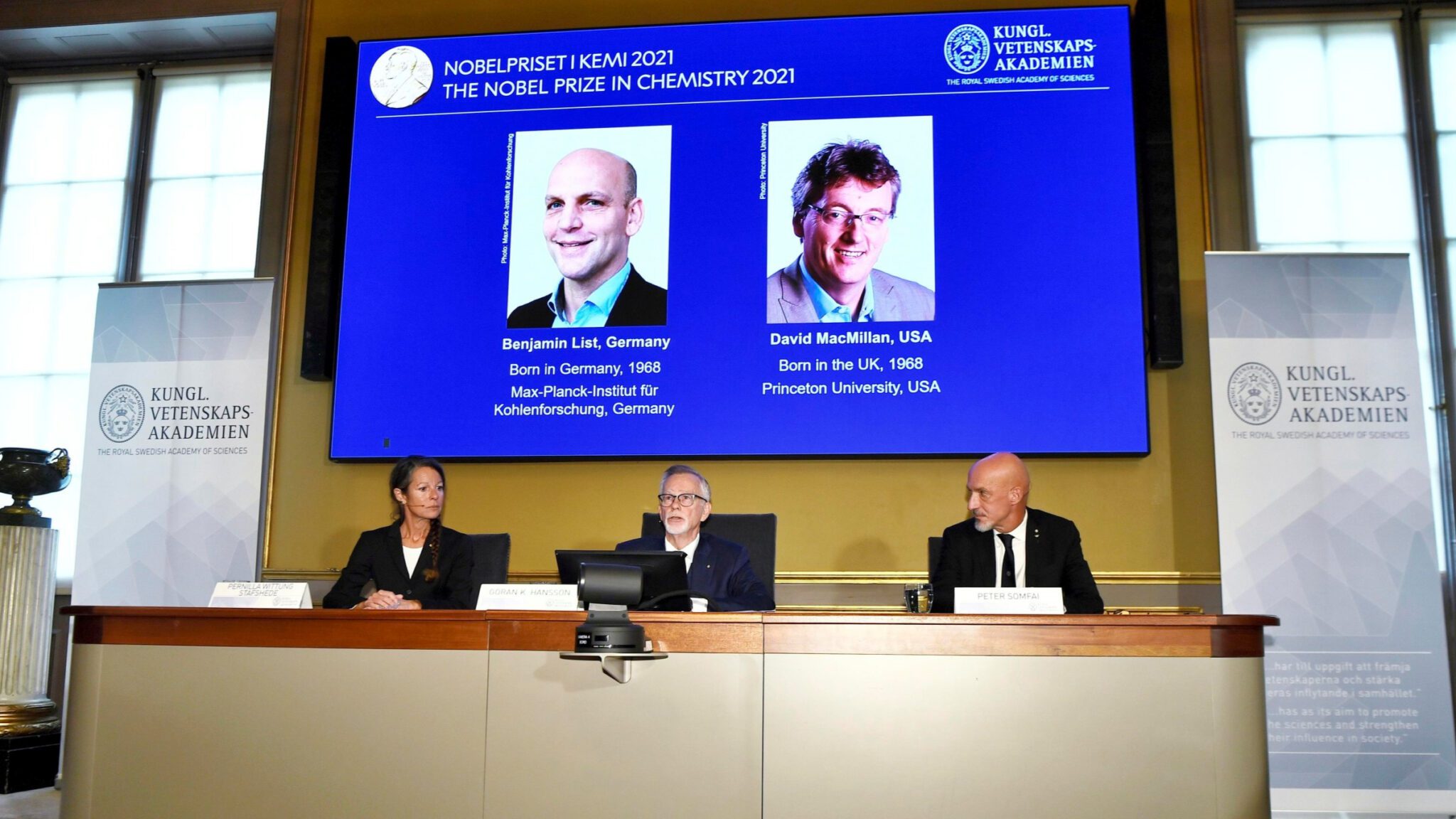
Two decades after discovering a new way to construct molecules, David MacMillan and Benjamin List win Nobel Prize
Catalysts play a vital role in drug development, driving complex sequences of chemical reactions to break down molecules or join them together. But until just a couple of decades ago, only two types of catalysts were known to scientists: metals and enzymes.
Metal catalysts are easily destroyed by moisture, so while it’s simple enough to deploy them in a lab, large-scale manufacturing becomes a challenge. Enzymes, on the other hand, consist of hundreds of amino acids, though frequently enough, only a few of those are actually involved in a chemical reaction.
Unlock this article instantly by becoming a free subscriber.
You’ll get access to free articles each month, plus you can customize what newsletters get delivered to your inbox each week, including breaking news.